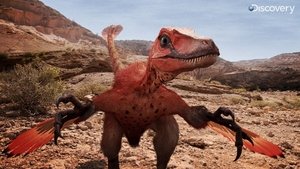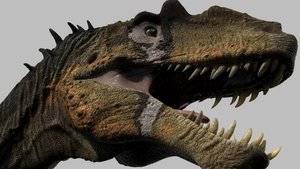
Gigantic and menacing, the Tyrannosaurus Rex is probably the most famous dinosaur that ever lived. However, new discoveries are proving wrong the previous depiction of the T.Rex as dull and slow - in fact, he was complex, dynamic and even bird-like. We get up a close and personal look at how they lived, from nesting in pairs to caring for their young and how they played together. The reign of the T.Rex ended when the impact of a huge asteroid hurtling toward Earth decimated the dinosaur population — but not all dinosaurs died. A few survivors such as Troodon, a small, bird-like dinosaur and the smartest dinosaur to ever live, may have hung on, yet eventually it, too, succumbed to the catastrophe. Watch as a lone Troodon — "the last dinosaur" — struggles to survive in a post-apocalyptic world. But our Troodon may not really be the last dinosaur. If birds are their descendants, then we're still living in the Age of Dinosaurs — and the DINOSAUR REVOLUTION continues.

The world of the dinosaur is a tough and dangerous one. Remember the ferocious Velociraptors made famous by "Jurassic Park?" Watch as bigger versions of them, Utahraptors, take down larger prey by hunting in groups. It takes revolutionary adaptations to stay alive during the era of the dinosaur, and this episode exposes how different species changed to survive. See how a smaller version of the Utahraptor, the Rahonavis, used its special ability to run up trees to evade predators. In the skies, a young pterosaur - a flying reptile - uses flight to evade its enemy. Also showcased will be the radical discovery that mammals were much more diverse at an earlier time than previously thought. You'll see the unusual Castorocauda, a beaver-like animal, and the Volaticotherium, an animal similar to a flying squirrel - mammals who shared the earth with dinosaurs during their reign. And an orphaned Protoceratops - a cousin to the more famous Triceratops - finds safety in numbers when it joins up with a group to fight off predators.

Take a leap back in time to an ancient watering hole, where predators and prey co-exist. This episode transports us to the town of Lourinha, Portugal, where the largest concentration of fossils in Europe exists. We'll show you how this watering hole looked 150 million years ago, during the late Jurassic, where giant sauropods (four-legged herbivores) took a break along migration routes. We see the fight for survival of a young Allosaurus as he battles the giant Dinheirosaurus - a plant-eater with a tail like a 35-foot long bullwhip - and Torvosaurus, a huge predator that competed for prey and territory. We meet the supporting cast of characters who gather near the watering hole, such as Ornitholestes - the "bird-robber" - and Rhamphorhynchus, a flying reptile, not to mention Miragaia, cousin to the well-known Stegosaurus, and Lusotitan, an 82-foot long sauropod. Unlike previously thought, this episode reveals how dinosaurs worked in complex social systems and how the watering hole was the center of that environment where different species lived, and died, together.

Everything you thought you knew about dinosaurs is wrong! In the past few decades, there has been a revolution in how scientists view dinosaurs. Recent developments in the study of dinosaur culture reveal they are much more active, complex and colorful than we ever imagined - ”more like birds than sluggish reptiles. This episode highlights new discoveries that shed light on the evolution from early dinosaurs such as the tiny Eoraptor to the bizarre looking crested dinosaurs of the Jurassic to the giant carnivores such as Tyrannosaurus Rex. We'll see the mating rituals of Eoraptor and a battle between two crested Cryolophosaurs in the forests of Jurassic Antarctica. Witness the special adaptations of Gigantoraptor, a dinosaur resembling a 17-foot tall turkey with brightly colored feathers, and the huge marine reptile Mosasaurus fights off a pack of voracious sharks to protect her offspring.